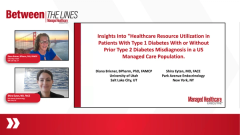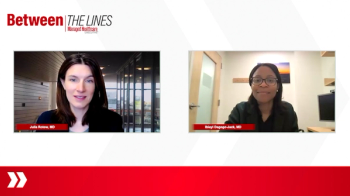
Study Insights: Exploring Healthcare Utilization in T1D
Panelists discuss how their study compared healthcare resource utilization between newly diagnosed patients with type 1 diabetes with and without prior type 2 diabetes misdiagnosis, using a retrospective claims database analysis to examine utilization patterns across different healthcare services.
Episodes in this series

This segment discusses the study methodology and baseline characteristics of patients examined in the healthcare resource utilization research. The study objective was to compare healthcare resource utilization between newly diagnosed patients with type 1 diabetes, specifically distinguishing those with a “clean” diagnosis from those who had previously been misdiagnosed with type 2 diabetes. The researchers conducted a retrospective analysis using an integrated claims database, examining both children and adults with continuous medical and pharmacy coverage. They categorized patients into two cohorts and analyzed various healthcare resources including inpatient admissions, emergency department visits, outpatient visits, laboratory procedures and medication prescriptions.
The baseline characteristics revealed interesting patterns among the study population. While most demographic factors such as race, ethnicity, gender, and insurance type were similar between groups, age emerged as the primary differentiating factor. Patients with type 1 diabetes averaged 27 years old, while those with prior type 2 misdiagnosis averaged 45 years old. This age difference also correlated with varying comorbidity patterns, with older patients showing higher rates of conditions like hyperlipidemia and hypertension, which may contribute to diagnostic bias since these conditions are traditionally associated with type 2 diabetes.
The study findings revealed a significant scope of misdiagnosis, with 31% of patients ultimately diagnosed with type 1 diabetes having previously received a type 2 diabetes diagnosis. This statistic highlights the magnitude of the diagnostic challenge in clinical practice, representing a larger problem than initially expected by both healthcare providers and payers. The clinicians noted that observational studies like this provide valuable real-world evidence that aligns with clinical experience, even though they cannot establish causation. The age bias in diagnosis appears to perpetuate the misconception that type 1 diabetes is primarily a childhood disease, leading to years of mismanagement before accurate diagnosis.
Newsletter
Get the latest industry news, event updates, and more from Managed healthcare Executive.




















































